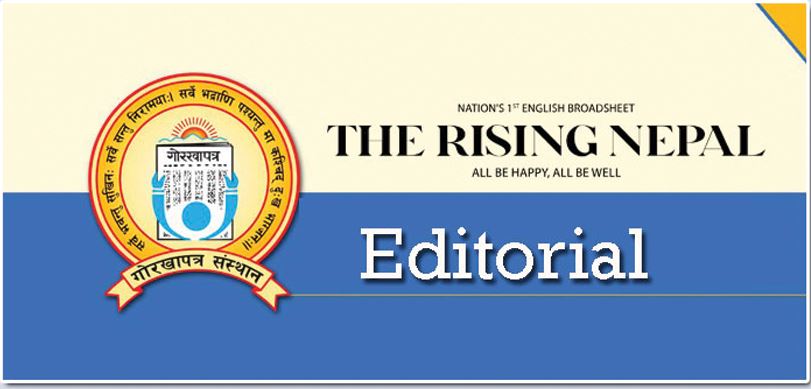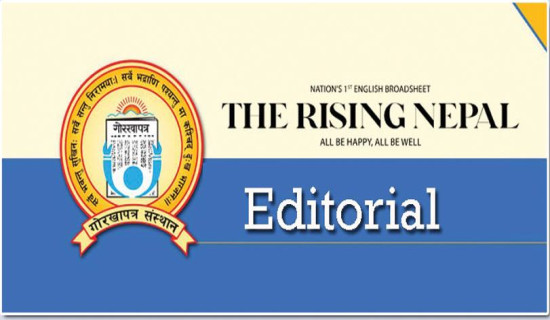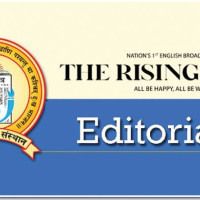- Saturday, 31 May 2025
Need For Trade Spur
The latest trade data made public by the Department of Customs show that Nepal's export has declined by 7.23 per cent while the import has fallen by 3.09 per cent during the first six months of the current fiscal year compared to the same period of last fiscal year 2022/23. Despite this, economists have argued that the economy is back on track. The reduction in the export of major exportable goods, including soybean oil and palm oil, resulted in decline in the overall export during the review period.
Owing to declines in export as well as import, there was some improvement in the overall trade deficit situation during the period. Another notable thing about this is the massive growth in the import of electric vehicles over that period. About 6,000 electric vehicles, including cars, jeeps, vans, buses and trucks worth Rs. 14 billion have been imported during the period, with electric three-wheelers accounting for Rs. 510 million. The figure also shows that the export of cement and clinker to India has increased significantly during that period, rising to Rs. 1.76 billion from Rs. 86 million.
The southern neighbour is currently the world's fastest growing major economy, and the mammoth spending on infrastructure building is driving much of that growth. This means India is consuming a large quantity of cement to power its construction frenzy. Nepal has arrived at a position to benefit from India's rise. How? Our tremendous growth in the cement manufacturing factories means that we are in a position to supply the cement that India needs. The government should incentivise them towards that goal which is not only feasible but also a necessity if we are to improve our economic standing.
Decline in both exports and imports have contributed to a fall in foreign trade during the period. Though the country's foreign trade has decreased significantly, the growth of electric vehicles in popularity is a positive trend and comes at a time when we are producing more and more hydro-electricity needed to recharge and drive them. They are far better options on environmental and health grounds compared with their fossil-fuel powered cousins. They also hold promise to reduce the use of both fossil fuels as well as vehicles they power – the import of which is a drain on our foreign exchange reserves.
The country faces a trade deficit of Rs. 693.19 billion. It is 2.62 per cent less than the same period last year. Our export of hydropower has contributed to make this happen. To lower the trade deficit further, prioritising the export of cement can be a good option. And there is no denying the fact that such industries have grown to become our strengths in recent years with far more capacity to export it than we are doing it currently.
While a reduction in the trade deficit is considered positive, the decrease may be due to decline in consumers' purchasing power. It can also mean that people are getting poorer because of diminishing income. There is also a widespread concern that the economy is generating fewer good-paying jobs than needed to lift many out of poverty or to pay enough to lead a decent life. It is desirable on the part of the government to take this matter seriously and take necessary measures.
















